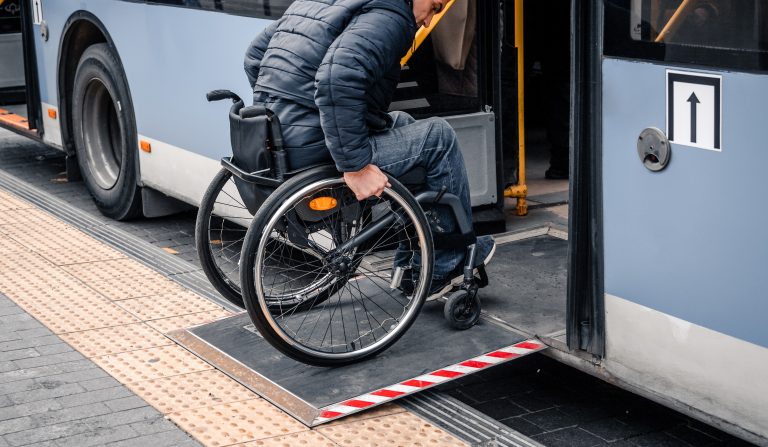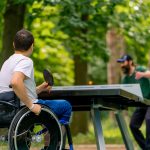Embarking on the journey to build inclusive communities ignites a spark of change. Dive into practical tips to weave a community that celebrates diverse abilities and empowers everyone.
Social inclusion is not just a buzzword; it’s a cornerstone of a vibrant and equitable society. In North America, specifically in Canada, fostering social inclusion is a collective responsibility that extends from people and businesses to community organizations. In this comprehensive blog, we dive deep into the subject, providing detailed and research-backed insights to promote social inclusion at every level. Our aim is to empower you to create genuinely inclusive environments that foster acceptance and participation for all.
Understanding Intellectual Disabilities
Before we dive into practical tips, it’s crucial to understand intellectual disabilities. Intellectual disabilities encompass a wide range of cognitive challenges that impact an individual’s intellectual functioning, adaptive behaviors, and daily life skills. These conditions can be present from birth or developed during early childhood. Intellectual disabilities vary in severity and require tailored support.
Understanding Social Inclusion
Social inclusion refers to the active participation and acceptance of all people, regardless of their background, abilities, or identity, in every facet of society. It’s about creating an environment where everyone feels valued, respected, and has an equal opportunity to engage in social, economic, and cultural life. Let’s explore how we can promote social inclusion effectively:
Practical Tips for Inclusion
Accessible Facilities:
- Ramp Accessibility: Ensure that physical spaces have ramps or alternative access points for people with mobility challenges.
- Accessible Restrooms: Install accessible restrooms equipped with grab bars, widened doorways, and lowered sinks.
- Clear Signage: Use clear and easy-to-understand signage with pictograms for wayfinding.
Canada’s Accessible Canada Act mandates accessibility for all, aiming to remove physical barriers in public spaces and transportation. Ensure your facilities, both public and private, comply with accessibility standards. This includes ramps, elevators, braille signage, and designated parking spaces to accommodate people with physical disabilities.
Inclusive Employment Practices:
- Diverse Hiring: Actively seek to hire people with intellectual disabilities, recognizing their unique talents and potential contributions.
- Training and Accommodations: Provide training on disability awareness and reasonable accommodation to create an inclusive work environment.
Accessible Technology:
- Website Accessibility: Ensure that your digital presence, including websites and online content, is accessible to screen readers and other assistive technologies.
- Digital Communication: Offer information in multiple formats, such as plain text, audio, and video, to accommodate diverse learning styles.

Inclusive Events and Activities:
- Venue Accessibility: Choose event venues that are physically accessible and offer seating options for people with mobility devices.
- Communication Accessibility: Provide information about events in accessible formats, including large print, braille, and digital alternatives.
- Inclusive Programming: Design events and activities that cater to a wide range of abilities and interests.
Education and Awareness:
- Inclusive Curriculum: Encourage schools and educational institutions to develop curricula that embrace diversity and inclusion.
- Awareness Campaigns: Launch awareness campaigns to educate the public about intellectual disabilities and challenge stereotypes.
Educational institutions can create reading lists that include books and literature written by authors with intellectual disabilities or featuring characters with intellectual disabilities. This helps students gain diverse perspectives and fosters empathy. Schools also can invite guest speakers with intellectual disabilities or organize virtual talks to allow students to interact with role models who have achieved success in various fields despite their disabilities. This inspires and reinforces the message of inclusivity.
Accessible Transportation:
- Public Transit: Advocate for accessible public transportation, including buses, subways, and stations, with features like ramps and designated seating.
Accessible Housing:
- Universal Design: Promote universal design principles in housing to ensure accessibility for people with disabilities.
For example, a house designed with a zero-step entryway eliminates the need for ramps or lifts. It features a gently sloped pathway or a level entrance that accommodates people who use wheelchairs, walkers, or have limited mobility. It’s also essential to include wider interior doorways and hallways, typically 36 inches wide or more. This accommodates mobility devices and makes it easier for everyone to move through the space comfortably.
Focus on accessible bathrooms, featuring roll-in showers with grab bars, lever-style faucets, and lower sinks. These design elements ensure that people with disabilities can use the facilities independently. Moreover, the kitchen needs to be designed with counters and cabinets that can be adjusted in height or are designed to be easily lowered or raised to accommodate users of varying heights or those who use wheelchairs.
It is important to take into account non-slip flooring. For instance, flooring materials that provide traction and reduce the risk of slips and falls are used throughout the house. This is especially important for people with mobility challenges.
Consider including home automation features that can be operated remotely. For example, lights, blinds, and thermostat settings can be controlled through smartphones or voice commands.
Support for Caregivers:
- Respite Care: Provide respite care services to support caregivers and families of people with intellectual disabilities.
- Educational Resources: Offer resources and training to caregivers to enhance their ability to provide care effectively.
Advocate for Policy Changes:
- Advocacy Initiatives: Advocate for policies that promote social inclusion, equal opportunities, and accessible services.
- Legislative Support: Support legislation that protects the rights and interests of people with intellectual disabilities.
Community Engagement:
- Consultation: Engage people and communities to understand their unique needs and challenges. Consultation involves actively seeking input and feedback from people with intellectual disabilities and the broader community to gain a comprehensive understanding of their specific needs and challenges. It’s a way to ensure that any inclusion initiatives or programs are tailored to the actual requirements of the community.
- Partnerships: Collaborate with local disability organizations and advocacy groups to collectively work toward inclusion goals. Partnerships involve joining forces with local disability organizations, advocacy groups, and other stakeholders to pool resources, expertise, and efforts toward common inclusion goals. These partnerships can be instrumental in creating a more inclusive community.
Empower People:
- Skill Development: Provide opportunities for skill development and life skills training.
- Self-Advocacy: Encourage people with intellectual disabilities to become active self-advocates.
Inclusive Communication:
- Accessible Information: Use plain language and provide information in various formats to ensure everyone can access and understand it.





Fostering an Inclusive Canada
Promoting social inclusion is a collective effort that requires commitment and action at all levels of society. By implementing accessible infrastructure, inclusive employment practices, and fostering understanding and awareness, we can build a community where everyone, regardless of their abilities or background, can actively participate and contribute to the rich tapestry of our diverse communities and where people with intellectual disabilities are valued, respected, and have equal opportunities to participate in all aspects of society. Together, we can create a more inclusive, equitable, and vibrant place for everyone.





